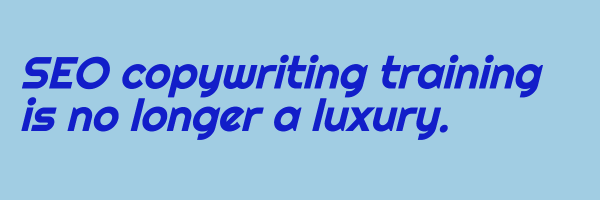Do you want to crank up your content success to a Spinal Tap 11?
A 2016 Curata study found that 75% of companies are increasing their investment in content marketing, and 43% are increasing staff levels.
Building a killer content team isn’t a “nice to have” skill set. It’s how companies like yours are staying competitive.
Want to make it happen?
It’s all about pinpointing the right writers for the job, streamlining your process, and arming your team with the knowledge they need.
Here’s what I mean:
People – who should you hire, and why?
Don’t sweat creating a C-level position.
According to a MarketingProfs article, “A more popular approach has been to bring on board someone with slightly less authority (and associated cost)—a VP or director of content marketing, with responsibility for developing and orchestrating a content strategy, hiring, and running the daily production schedule, but without reporting to the board.”
A content strategist understands SEO, analytics, content marketing strategies, and sales writing (yes, sales writing is its own skill set). Your strategist could also be your main writer or she may supervise a team.
The key is: you need a smart person on staff who can pull everything together, check the work, and measure the results.
Larger companies require additional writers who can write fast, write well, and make the reader hang on every word. Here are some tips:
- Yes, it is possible to hire lower-cost, newer writers; for instance, those eager grads straight out of college. However, know that they’ll need extensive supervision and detailed style guides—plus, they’ll take longer to onboard.
- Ex-journalists make excellent staff members. They understand deadlines, know how to write, and are sticklers for detail. They will need training on the “SEO piece” (more about that later) but their writing skills are solid.
- Sometimes, an internal SME can act as part of the writing team. This strategy only works with the SME is engaged in the process, willing to write and can hit deadlines. Many SMEs can’t dedicate the time needed for constant production.
Hot tip: Consider approaching freelancers who specialize in your vertical and ask if they’d be willing to work in-house. Sometimes, freelancers are tired of owning their own business and are looking for new opportunities.
Process – create a sustainable content flow
“Look for easy” was my battle cry during my SEMpdx content talk earlier this year.
Why? Because I’ve seen too many content teams tie themselves up in knots. They publish too frequently. They publish the wrong type of content. And instead of flowing with what is and focusing on what works, they bang their heads against the wall.

Here’s the deal: instead of focusing on 100 different content directions, figure out your company’s ONE content “thing.”
Do LinkedIn posts drive more traffic (and conversions)? Publish on LinkedIn more often.
Do your long-form posts get lots of link love? Do that more often.
Does asking your SME to write blog posts fall flat, but she is willing to be interviewed for a podcast (that can turn into a transcript–which is fantastic Google-food?). Make it so!
Of course, this is easy to type–and harder to implement. Sometimes, we’re too close to our data, so figuring out our one content thing may take some time. That’s OK. But expect to spend some mindshare on this.
Once you’ve figured out your one content thing, it’s time to shore up other process-related issues.
Process challenges are the second biggest issues I see. Staying with an inefficient content production process is easy.
But, if you can pinpoint areas of improvement, your life will be so much easier.
Important process questions to ask are:
- Is our publication schedule working? Should we publish more–or even less?
- What roadblocks are we hitting? Instead of beating our heads against the wall, is there a different way of doing things?
- Do we want to test any growth hacking tactics? How do we build them into the existing workload?
- How can we repurpose older content assets?
- Who is taking over the freelancers’ workload (if you outsourced)? Does bringing the content in-house change any deadlines?
The more you can identify issues holding your team back from success, the faster you can fix them, save valuable time, and reap the rewards.
After all, imagine what an additional 30 minutes “free time” a day could do for your team’s productivity (and sanity!).
Hot tip: Conduct an SEO audit, review your reader persona, and dive into your analytics before you start. It will make your job–and setting a process–much easier.
Education – get your team on the same page
Once upon a time, SEO copywriting training was one of those “good if there’s budget, but not necessary” things.
That trend has changed.
A recent Conductor study found half of writing jobs now require SEO skills.
What does this mean to you–and your team?
SEO copywriting training is no longer a luxury. If you want your company to stay competitive–and your content to position–you need to train your writers.
In fact, a lack of solid SEO education is the number one issue holding many teams back.

The good news is that something magical happens when your entire writing team (or even your entire digital marketing team) goes through an SEO content training.
- Your team members understand how to choose better key phrases and weave them into the copy.
- Your writers understand how to assess the competitive landscape, and create 10X, high ROI articles.
- If some of your team has been resistant to SEO writing techniques in the past, your writers can finally learn SEO writing is good writing, period. It’s not key phrase-stuffed. It’s not spammy. It’s the same, excellent copy they’ve always written–with a slight Google twist.
There are many training options (and price points), including online courses and customized solutions. I’ve written about how to find SEO copywriting training resources here.
If your writing team has the SEO elements down, consider other ways you can boost their skills.
For instance, could their sales writing be a little better? Do you want them to be PPC ad-writing masters? Your investment should pay for itself in increased clicks and conversions–and your writing team will love the additional training.
Hot tip: Do you need help identifying content opportunities as well as getting the how-to knowledge you need? Customized SEO copywriting trainings typically have a site audit and consultation component.
Yes, your company can build a killer team of in-house writers! Hire the right people, give them the education they need, and continually update your process (process-tweaking is a marathon; not a sprint.)
Will it have its challenges? Yes. But the increased reader engagement (and yes, better positions) is worth it.





